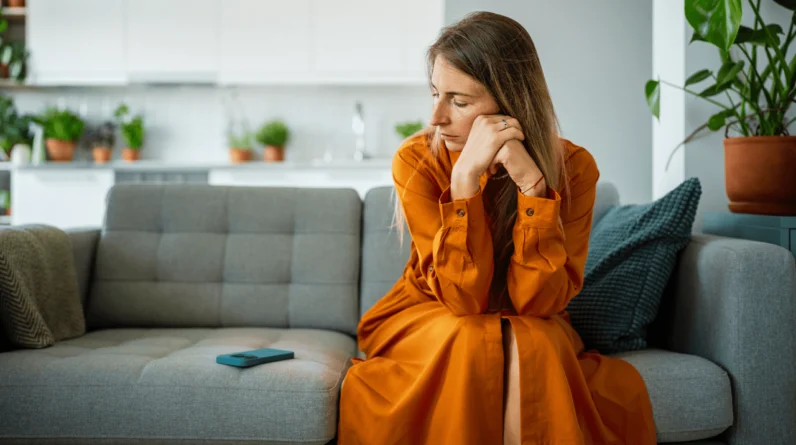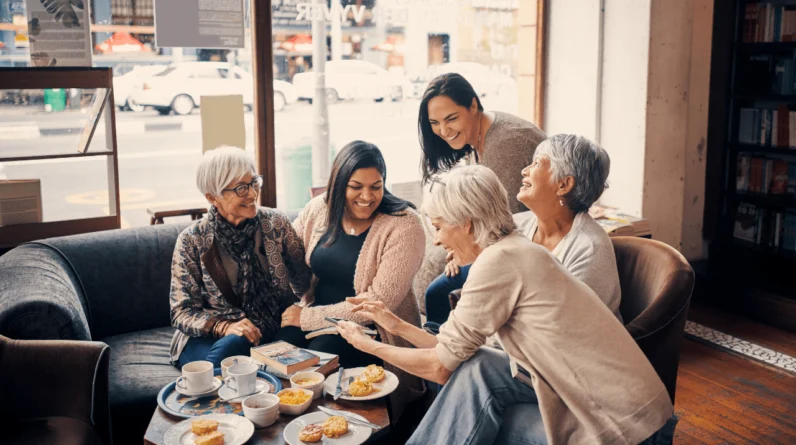
When I first started learning about relationships, I used to look at everything through the lens of the codependency and narcissism – two ends of a spectrum.
This was helpful because I learned how to overcome codependency little by little. However, when I started learning about attachment theory in regards to relationships, I learned so much more about both partners in relationships.
What is Attachment Theory?
Attachment theory is a psychological framework that looks at how we form bonds with others. Essentially, it theorizes that the way we attached to caregivers in childhood can influence our behavior and relationships in adulthood.
That makes sense, right? You’ve probably heard plenty of stories or have your own about how a poor connection or bond between parent and child affected that child as an adult.
Attachment theory breaks up attachment styles into four categories:
- Secure
- Anxious-ambivalent
- Avoidant
- Disorganized
Today, we’re going to cover the anxious-ambivalent style, which we can simplify as “insecure”.
It’s also sometimes referred to as codependency, and is characterized by a strong need for closeness and connection coupled with fear of abandonment.
People who experience anxious attachment may be preoccupied with their partner’s availability and become overly dependent on them to provide security and comfort.
Here are some more anxious attachment characteristics:
- Difficulty trusting and feeling secure in a relationship
- Often worried and fears abandonment
- Intense emotional reactions to perceived rejection
- Difficulty with autonomy and independence
- Tendency to act clingy or needy in relationships
- Fearful of expressing needs and emotions directly
- Struggles with jealousy
- Difficulty setting and holding boundaries
- Tendency to become overly involved in the relationship at the expense of personal needs
Do you see yourself or someone you know in any of these characteristics?
If so, an awareness of this attachment style can help you better understand your dynamics and how you can work together with others to create secure and healthy connections.
The Challenges of Managing Anxious Attachment in Romantic Relationships
If you identify as having an anxious attachment style, you may encounter challenges in your romantic relationships.
You may become:
- excessively clingy
- overly dependent on your partner
- struggle with trust issues due to feeling insecure and fearful of being abandoned
These anxieties can create tension in the relationship and make it difficult for you and your partner to establish a secure bond. It can also be challenging for you express your needs clearly and set boundaries, creating a cycle of distress that is hard to break.
At the same time, try to remember that anxious attachment does not have to be a negative thing. It’s simply an attachment style you picked up when you were an infant or child.
When you learn how to manage it and make changes where you can, it can become a source of strength in relationships. You and your partner will have an increased ability to empathize with each other and experience deeper levels of trust and connection.
3 Strategies for Creating a Secure Attachment Style
There are some strategies that couples can use to develop a secure attachment style in their relationship, even if one or both partners has an anxious-ambivalent attachment style.
1. Understand Your Needs and Triggers.
First, it’s helpful for both partners to be aware of their own attachment styles and how those may influence their behavior in the relationship.
Understanding your needs and triggers can help you manage difficult emotions more effectively and communicate more openly with your partner. It’s also helpful to talk about issues relating to trust, safety, and independence in the relationship to ensure that both partners feel secure.
For example, let’s say Mike and Sally have been dating for a few months now and both feel a strong connection with each other. However, Sally has trust and safety issues due to having an anxious attachment style.
She feels uneasy about opening up to Mike and fears that he may betray her trust or abandon her.
So, they have a conversation. Sally talks about her insecurities. To address Sally’s concerns, Mike talks to her about the importance of trust in any relationship and how it can be strengthened over time. He assures her that he values her trust and would never do anything to hurt her.
Mike also suggests that they work on building their trust together by being honest and transparent with each other. He assures her that he will always be there for her and will do everything in his power to protect her.
Through open communication and mutual respect for each other’s needs, Mike and Sally are able to build a strong and healthy relationship where both partners feel secure and valued.
2. Setting Clear Boundaries.
Setting clear boundaries can also be beneficial for managing anxious attachment.
This means establishing expectations about communication, commitment levels, and other aspects of the relationship so that each partner knows what to expect from the other.
Remember that boundaries are not meant to be restrictive, but can instead provide a sense of safety and structure to the relationship.
3. Practice Self-Care.
Finally, it is essential for couples where one or both identify with anxious attachment to practice self-care and prioritize their own needs.
These things can all help to create a secure attachment style in the relationship:
- spending time apart
- engaging in fun activities together
- making sure that each partner feels seen and appreciated
By utilizing these strategies, couples can create stronger and more secure romantic connections, even with anxious attachment present. With effective communication and a commitment to self-care, it is possible to manage anxious attachment in relationships and create secure bonds that last.
Address Past Trauma or Attachment Wounds
Counseling is also a helpful tool to overcome anxious attachment.
It helps identify attachment patterns and develop secure ways of relating to others, including communication skills, boundaries, and self-esteem.
Therapy can also address past traumas or attachment wounds contributing to anxious attachment. With newfound insight and skills, you’re better able to create fulfilling relationships.
Wrapping It Up
Now that you know more about anxious attachment styles, do you see yourself falling into this category?
If so, don’t fret because you can learn healthier ways of relating. Sure, managing anxious attachment in romantic relationships can be challenging at times, but it is possible to overcome.
Recognizing attachment patterns and developing secure ways of relating to others are crucial steps towards building healthier relationships. Communication, boundaries, and self-care are all important factors to keep in mind.
Also, seeking therapy can provide valuable guidance and support in this journey. If you’re reading this, congratulate yourself for taking steps towards healing and personal growth, as you’re on the way to enjoying a more fulfilling and satisfying relationship based on trust and security.
Updated from Apr 9, 2023
Photo by Jonathan Borba







